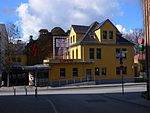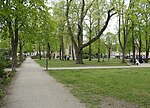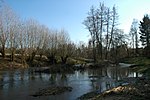University of Erlangen–Nuremberg
University of Erlangen–Nuremberg (German: Friedrich-Alexander-Universität Erlangen-Nürnberg, FAU) is a public research university in the cities of Erlangen and Nuremberg in Bavaria, Germany. The name Friedrich–Alexander comes from the university's first founder Friedrich, Margrave of Brandenburg-Bayreuth, and its benefactor Alexander, Margrave of Brandenburg-Ansbach.FAU is the second largest state university in the state of Bavaria. It has 5 faculties, 24 departments/schools, 25 clinical departments, 21 autonomous departments, 579 professors, 3,457 members of research staff and roughly 14,300 employees.In winter semester 2018/19 around 38,771 students (including 5,096 foreign students) enrolled in the university in 265 fields of study, with about 2/3 studying at the Erlangen campus and the remaining 1/3 at the Nuremberg campus. These statistics put FAU in the list of top 10 largest universities in Germany. In 2018, 7,390 students graduated from the university and 840 doctorates and 55 post-doctoral theses were registered. Moreover, FAU received 201 million Euro (2018) external funding in the same year, making it one of the strongest third-party funded universities in Germany.FAU is also a member of DFG (Deutsche Forschungsgemeinschaft) and the Top Industrial Managers for Europe network.
Excerpt from the Wikipedia article University of Erlangen–Nuremberg (License: CC BY-SA 3.0, Authors).University of Erlangen–Nuremberg
Erlangen Innenstadt
Geographical coordinates (GPS) Address Nearby Places Show on map
Geographical coordinates (GPS)
| Latitude | Longitude |
|---|---|
| N 49.597916666667 ° | E 11.004769444444 ° |
Address
91054 Erlangen, Innenstadt
Bavaria, Germany
Open on Google Maps









